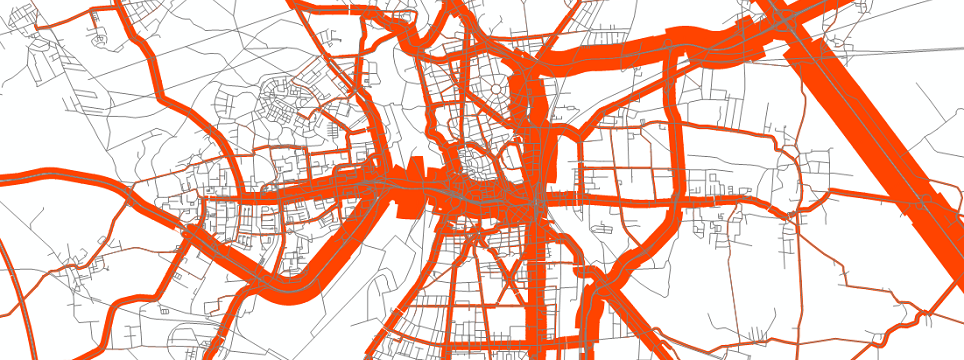The integrated traffic model of the city Halle represents the travel behaviour in the City Halle and its surrounding area. In addition to motor traffic and public transport, the multimodal travel demand model considers pedestrian and cycle traffic as well as motor vehicle fellow passengers. Extending the research area to the neighbouring counties assures urban-rural relationships being treated with particular focus on traffic planning.
Input parameters for the travel demand model are:
- Socio-demographic data (population distribution, age distribution, target opportunities etc.)
- Travel behaviour data (on the basis of household surveys, Mobility in Germany (MID) survey, Mobility in cities (SrV) survey)
- Data regarding transport facilities (transport network for all traffic modes, timetables)
The model allows a realistic representation of the travel demand and its variability throughout the day. Besides the main transport network, the network model includes the complete secondary transport network. The individual turn relationships at the interchanges are modelled dependent on the traffic volume, resistances at traffic light systems were implemented by considering all signal time plans.
Based on the traffic model created in 2011 and last updated in 2018, the model was backed with current mobility data in the next update, a strong differentiation of activities was made and a model for regular professional traffic was built. in addition, mobility rates are inked to household data in the new transport model , thus establishing a connection between these data.
Further information is provided in our factsheet 0,8 MB.

